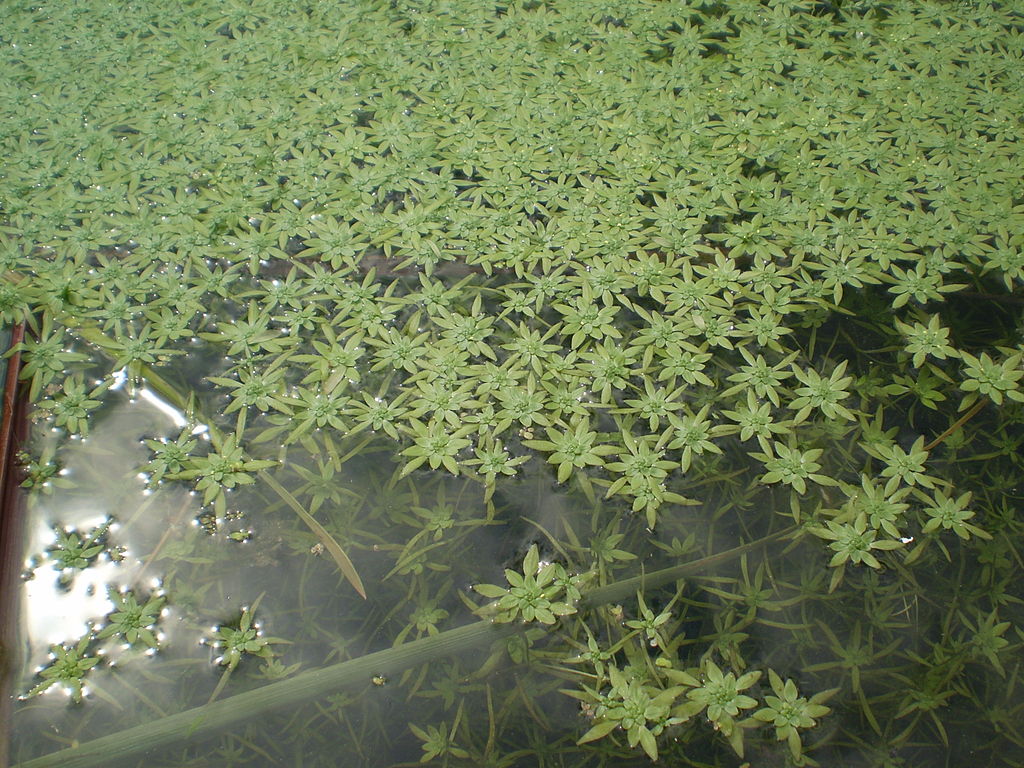water-starwort (Callitriche)
Where?
The water-starwort (Callitriche) form a group of plants living in water. They are creeping annual to perennial herbaceous plants living on the bottom or partially or completely under the water surface. They belong to the natural vegetation of a river.
Appearance?
The shoot axis grows filiform and is covered with opposite leaves. The shape and arrangement of the leaves varies greatly depending on the location. Plants located below the water surface often have lanceolate or linear leaves and long internodes. An upper portion of the leaves and flowers often float in carpets on the water surface.
Special features?
There are several Callitriche species that are sensitive to overly nutrient-rich water (eutrophic). These include Callitriche cophocarpa, recognizable by its lance-shaped, longer leaves. Likewise, there are Callitriche species such as Callitriche obtusangula that are tolerant of water pollution and are considered indicators of eutrophic waters. Unlike Callitriche cophocarpa, Callitriche obtusangula has rounder leaves. However, beware that other Callitriche species also have rounded leaves. So if there are water-starwort swimming on your brook or river, look for other indicators and see if your water-starwort matches your observations.

Identifying characteristics: lanceolate, longer leaves. Callitriche cophocarpa is found in streams or rivers with little polluted or eutrophic water.
"File:Callitriche cophocarpa.jpg" by Jan Prančl is licensed under CC BY 3.0.

Identifying characteristic: round leaves of Callitriche obtusangula
Callitriche obtusangula Le Gall, 1852 by Tenesse85 is marked with Public Domain Mark 1.0.
This website uses no external trackers, no analytics, just session cookies and values your online privacy.
